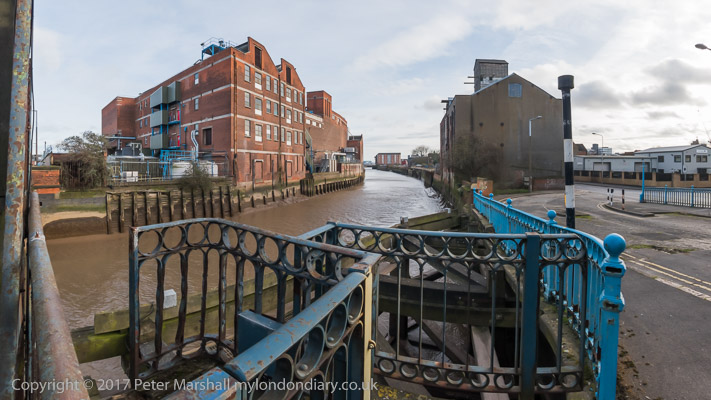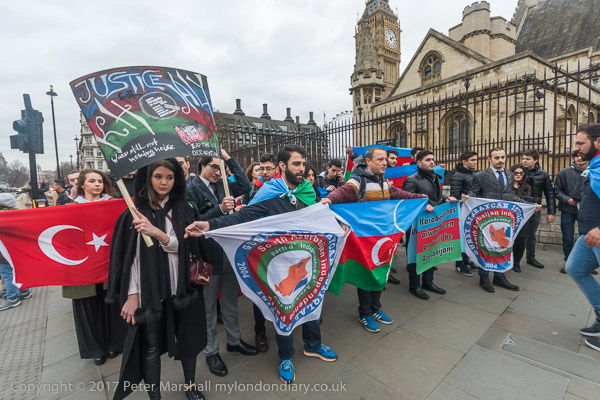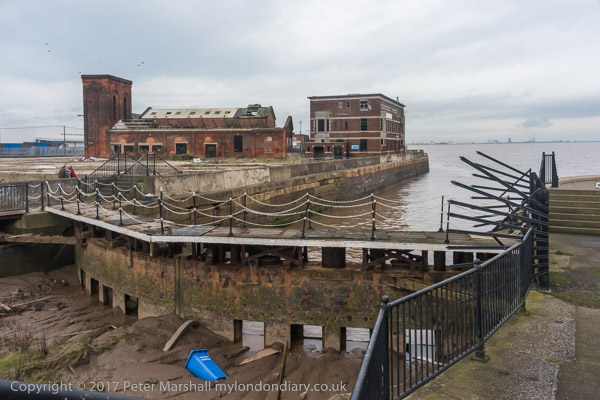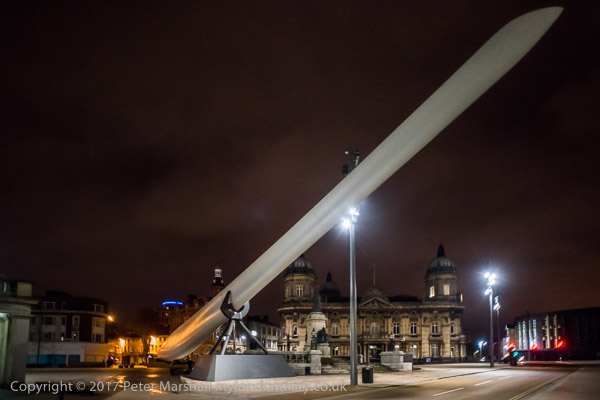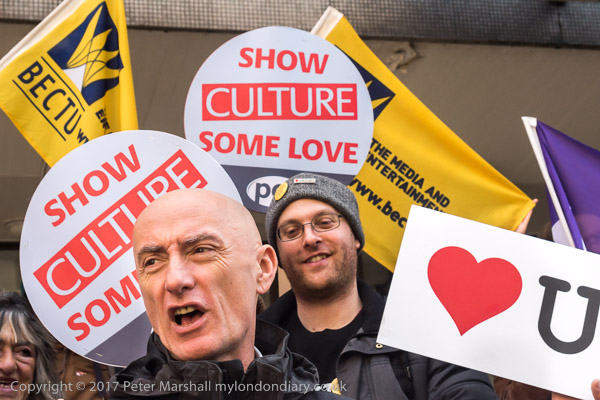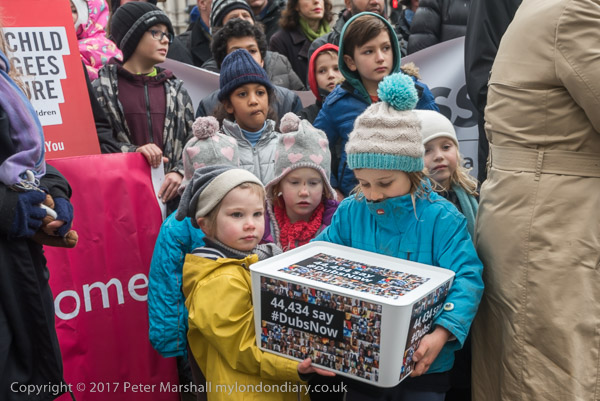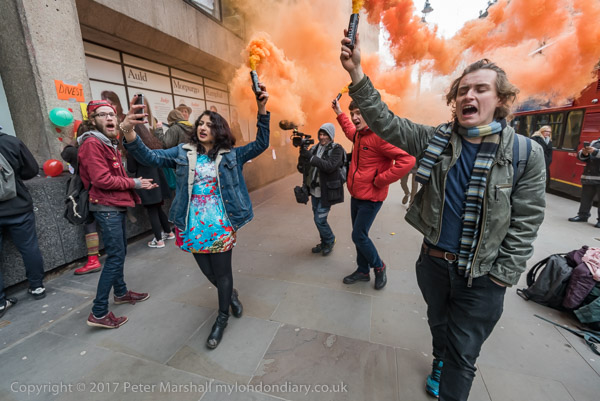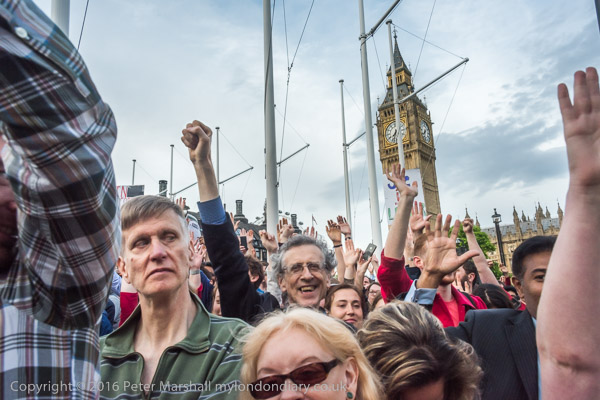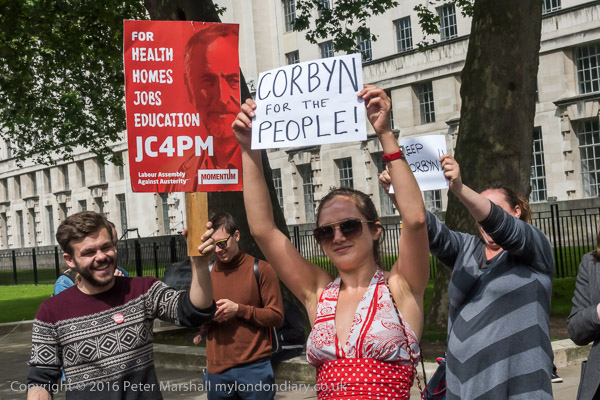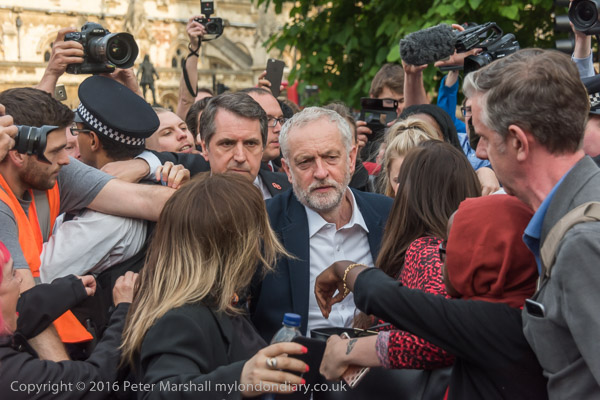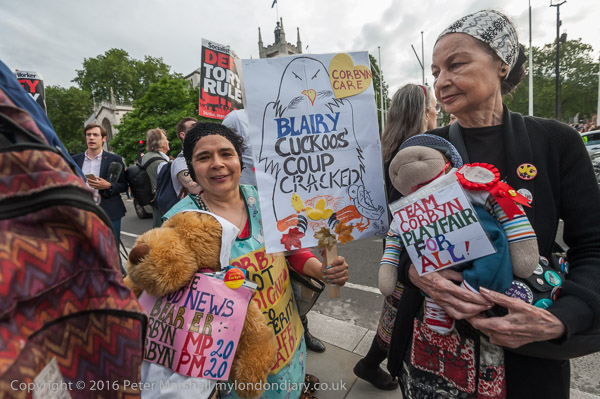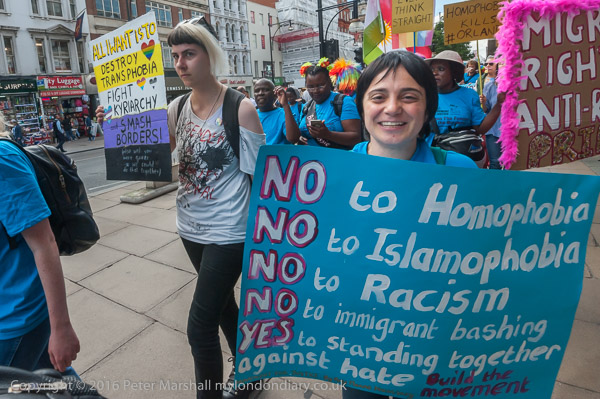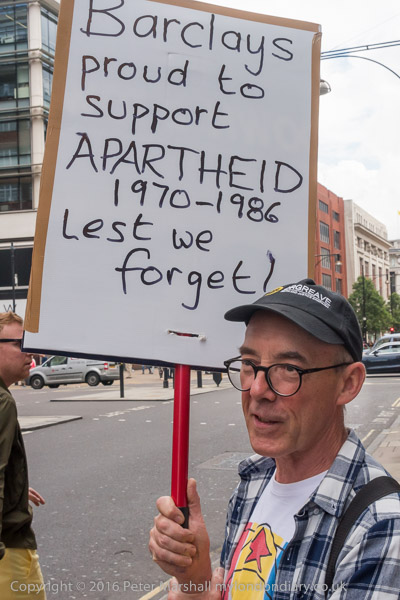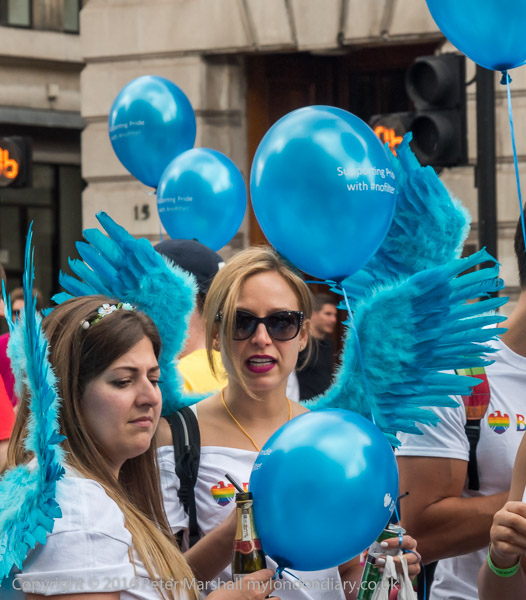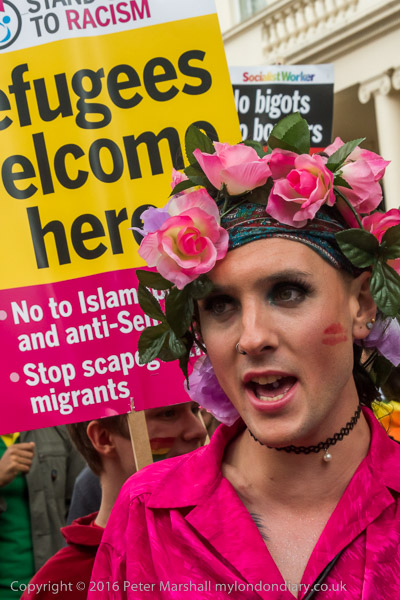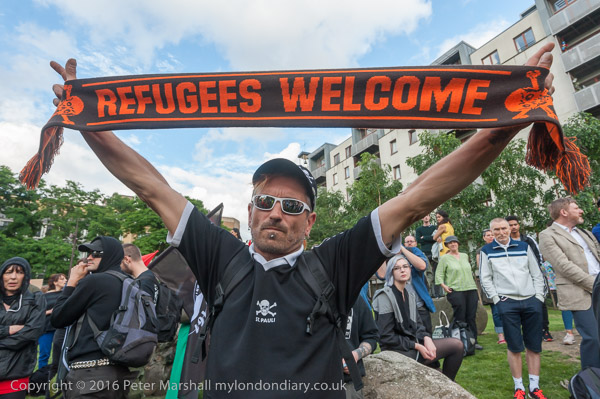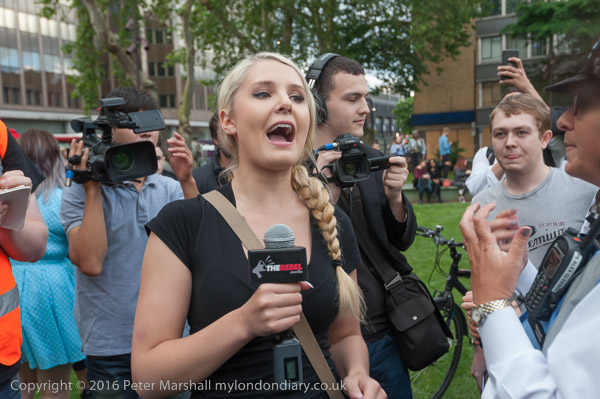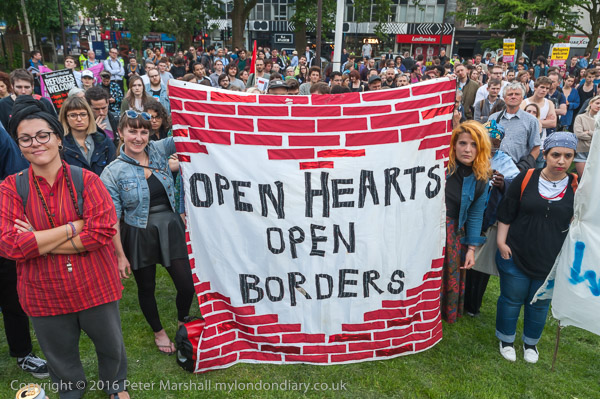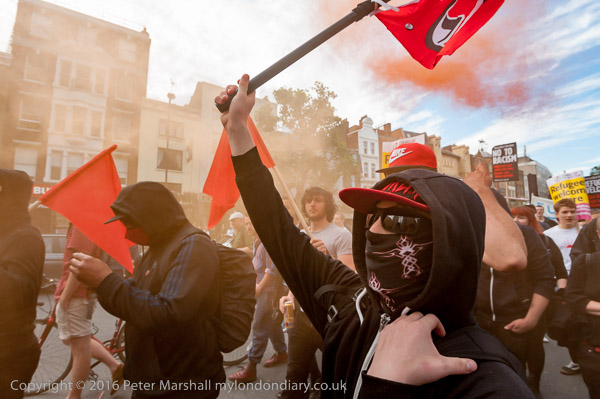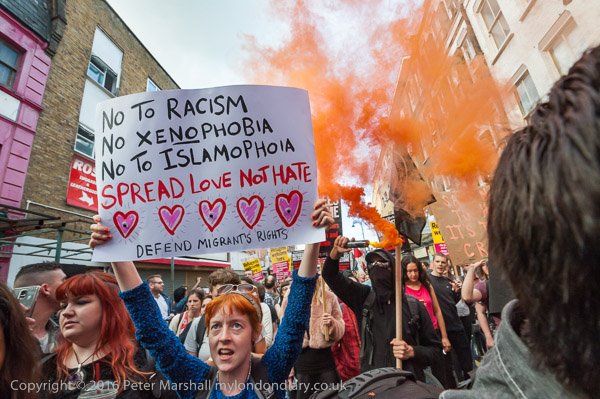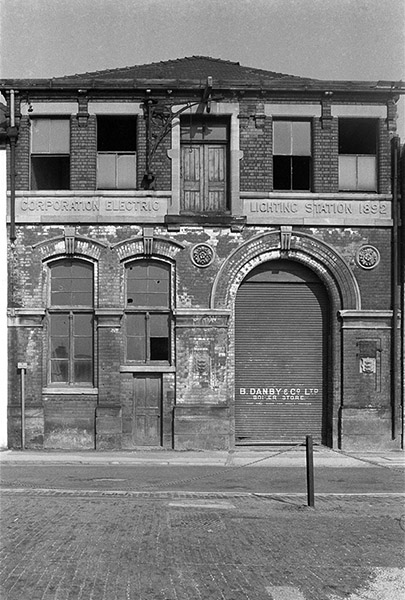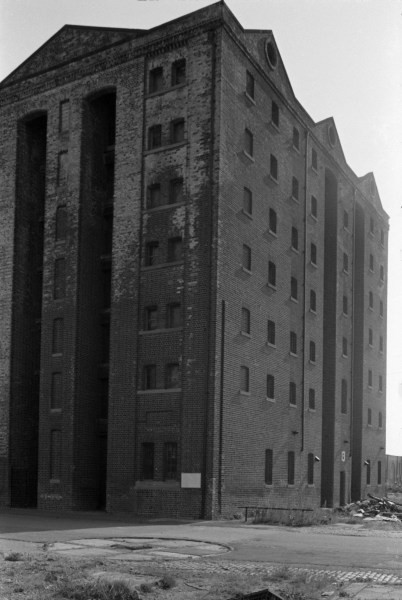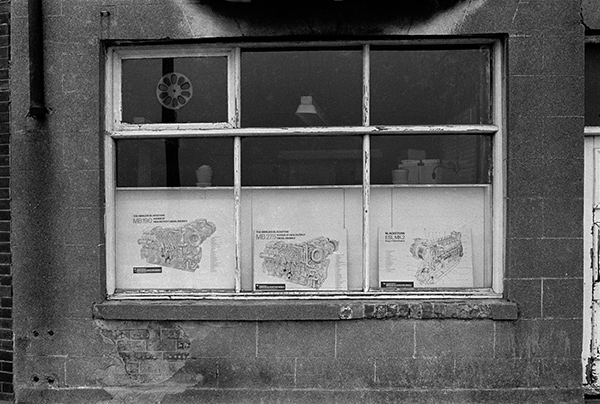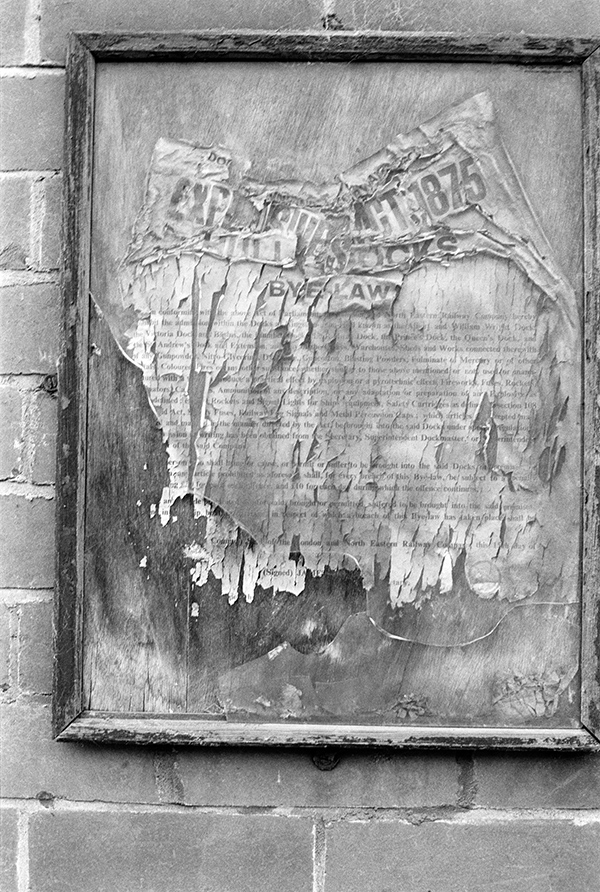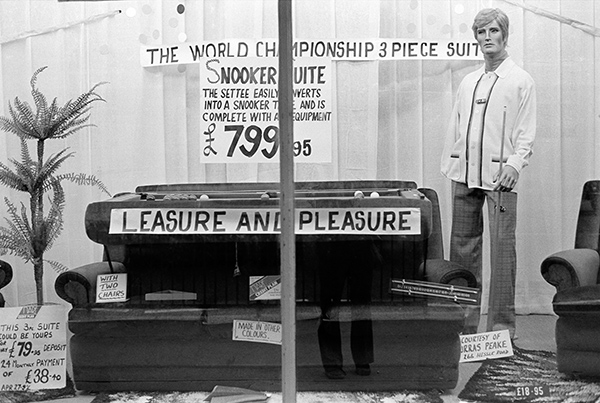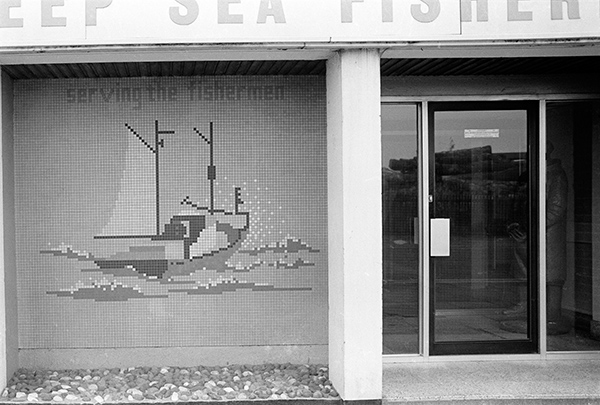23 March 2017
These railway tracks ran into the Neptune St Goods station of the Hull & Barnsley railway which opened in 1885. The company, full name The Hull Barnsley and West Riding Junction Railway and Dock Company had been backed by Hull Corporation to compete with the monopoly of the North Eastern Railway on traffic to the city and the docks. It opened its new Alexandra Dock the same year. After financial difficulties towards the end of the century it agreed to work with the NER over the building of a new jointly owned dock, opened in 1914 as the King George V Dock, and it merged with the NER in 1922, shortly before the 1923 grouping when this became part of the LNER.
The goods station was closed around 1960 and the yard was taken over Drapers to cut up steam locomotives for scrap around 1967 when they moved there from the old HBR Sculcoates Goods; around 578 engines ended their days at the two locations, and the pile of scrap past the wagons is probably some of their remains.
The large brick building left of centre is the HBR good shed and it and some of the Neptune St buildings remain. There is still a bridge, though completely rebuilt in concrete as a part of the construction of Clive Sullivan Way. The white building at left is the AJK Ltd (Andrew Johnson Knudtzon) Neptune Street bulk cold storage warehouse, 36,613 cubic metres of space for your frozen seafood, meat and other products close to Albert Dock.
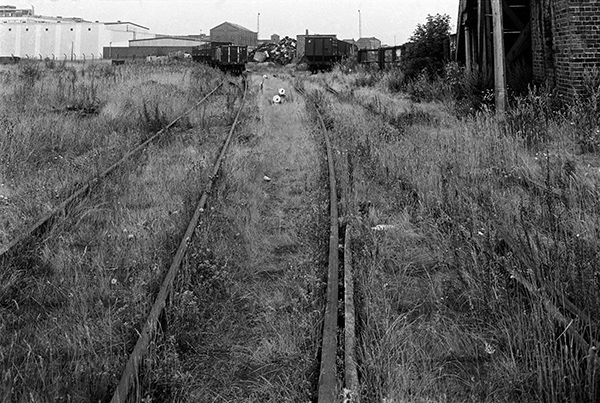
28v41 Rail tracks under bridge to William Wright Dock, Goulton St, 1981 – Docks
24 March
Brenda’s Cafe was on a street corner somewhere on or close to Goulton St, but appears to have been boarded up when I took this picture, and I have no recollection of exactly where it was located. Almost certainly like most of the housing in this area it will have been demolished shortly after I made this and a second photograph concentrating on the message ‘THIS IS BRENDA’S CAFE’.
I liked the underlined ‘THIS IS’, written on a slant and then the careful alignment to the brick courses of ‘BRENDA’S CAFE’, provided with a correct apostrophe and a full stop but no acute accent. But I imagine Brenda’s was a cafe rather than a café.
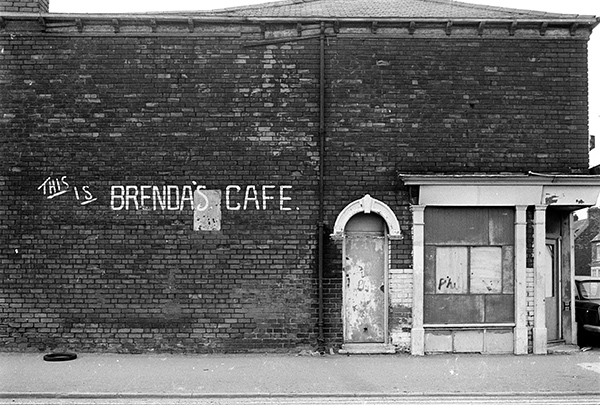
28v42: Brenda’s Cafe, Goulton St area, 1981
Also:
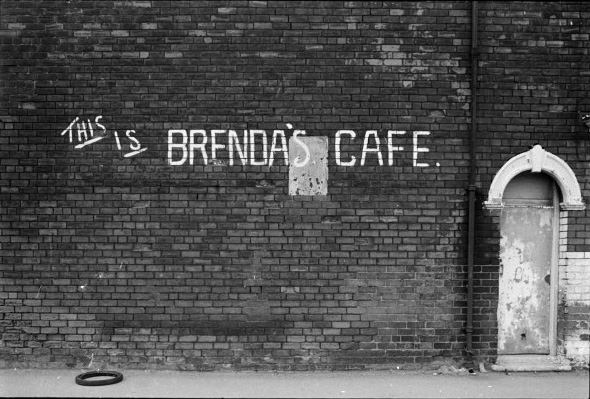
28v43: Brenda’s Cafe, Goulton St area, 1981
25 March 2017
Above the doorway of the 1930’s brick building of the Royal National Mission to Deep Sea Fishermen’s Queen Mary Hostel (a building that is now the Hull Training Business Academy) in the 3 layers of stone facing above the stone door surround was a fairly lightly scratched bas-relief of two fishermen hauling nets aboard a small planked boat. The section at bottom right had suffered somewhat from erosion and the wheelhouse of the boat at top left was almost invisible.
I think my focus was possibly slightly out on this image, but the stone was also rather worn. A few years later this sculpture was painted to make the details clearer, but when I made this I think it was bare stone. When I last saw it, most of the paint had faded or flaked off and the work was reverting to its former state.
The building is a few yards to the west of the junction with Boulevard and on the north side of Goulton St.
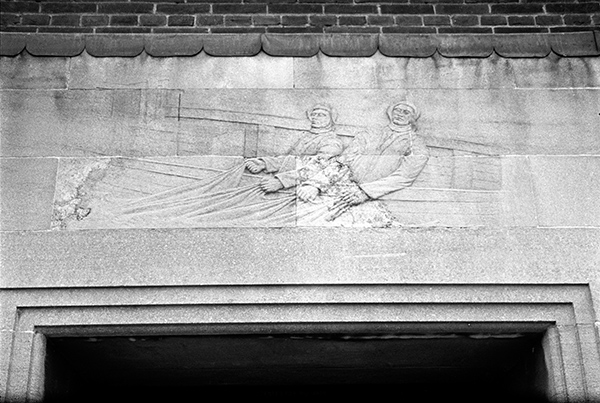
28v44: Fishermen bas-relief, National Mission to Deep Sea Fishermen, Goulton St, 1981 – Hessle Rd
26 March 2017
This statue, I think in fibreglass, of a fisherman was in the reception area of the Royal National Mission to Deep Sea Fishermen., and could be seen clearly through the glass door and window, though the fine wire grid in the toughened glass.
I made several near-identical exposures through the right-hand window, and can be seen doing so in a reflection at the left of the picture, apparently from an interior glass divider.
I have been unable to find any information about this sculpture, or about its current location, though doubtless some people in Hull will know.
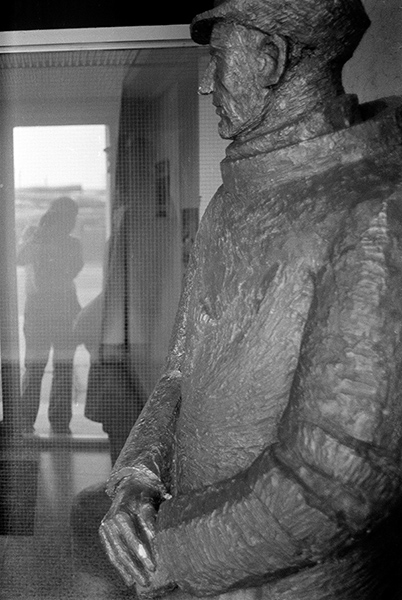
28v46: Fisherman, National Mission to Deep Sea Fishermen, Goulton St, 1981 – Hessle Rd
27 March 2017
Although my note on the contact sheet states ‘Boulevard’, I think this fine doorway was almost certainly in Coltman St, another of the streets I walked down on my way to Hessle Rd. You can still see a very similar example at the end of a row in Coltman St (I think at 194) on the west side fairly close to Anlaby Rd. There is a gap where two properties have been demolished, possibly following fire damage, a rather common fate for various reasons with derelict properties, particularly when listed. This may well have been one of those now missing.
There are around 15 houses in the street which were Grade II listed in 1973, and this example must surely have been one of these. The street was named after the Coltman family who owned the land and developed it from around 1840 starting at the south end on Hessle Rd, and it includes a number of houses in a ‘Greek Revival’ style from the 1850s.
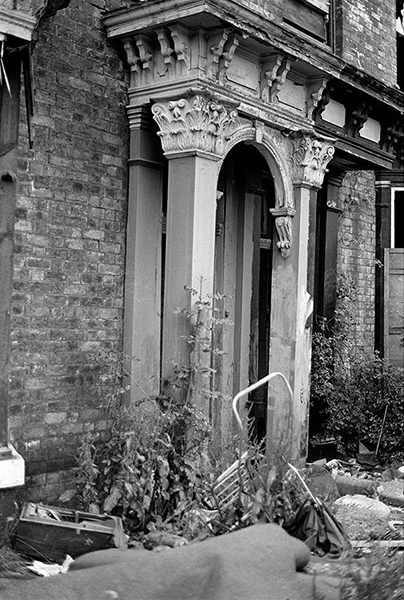
28v53: Doorway, probably Coltman St, 1981 – Hessle Rd
28 March 2017
I photographed this shop window on several occasions. A small general store and sweet shop on Church St I think I went in and bought the occasional Mars Bar or can of drink to keep me going in an otherwise rather desolate area. The normal window was simply a few drink cans thrown in randomly and this was a special effort for the Royal Wedding , with the tray and carefully arranged cans.
Church St used to lead to St Peter’s Church, the parish church of Drypool a large building which replaced and incorporated parts of the earlier church in 1823, with seating for a thousand worshippers. This was destroyed by bombing in 1941, though its former churchyard is still there across from where Church St meets Great Union St. The site of the church is now occupied by Humber Galvanising and its car park.
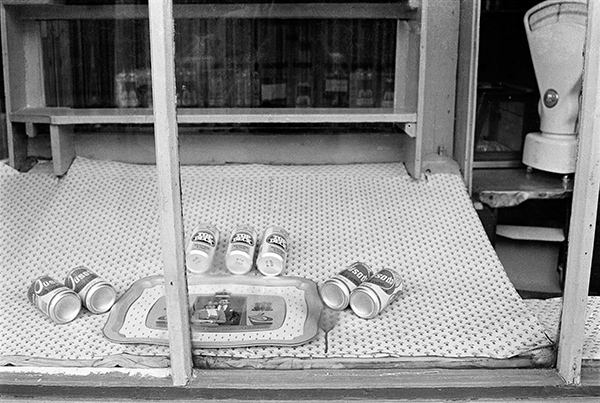
28×12 Royal Wedding Window Display, Church St, 1981 – East Hull
29 March 2017
Like St Peter’s Church nearby, the Clarence Flour Mill was badly damaged during wartime bombing, with only the silo remaining from the original 1891 flour mill, but it was rebuilt and reopened in 1952, continuing in operation until 2005.
Hull’s most prominent landmark, it was demolished in 2015, supposedly to allow a remarkably ugly replacement, the Radisson Blu hotel, to be built in time for the 2017 City of Culture. When I walked past a month ago the site was still just an empty gap of ground-level rubble and brick, with no building work having started.
Joseph Rank was born on Holderness Rd, Hull into a milling family in 1854 and was running a small rented windmill by the time he was 21, but it failed to make money. He invested in a larger windmill which was profitable and a few years later after seeing them in action at another mill he realised the potential of using steel rollers and mechanical power to greatly increase output, building his Alexandra Mill in Williamson St off Holderness Rd in 1885, the first mill of its type in the UK.
The Clarence Flour Mill, as well as having roller mills with high capacity also led in other areas of technology, including the bulk handling of flour, discharging it in into barges on the River Hull.
As well as the large ‘JOSEPH’ at the top of the picture, my attention was also drawn to the much smaller message across two of the ground floor window panes, ‘HELP ME’. My younger son, Joseph, then three, may well have been with me when I made the exposure, and I certainly pointed out his name to him on various occasions as we went past, and I may well have felt in need of help myself. But somewhere inside this huge building, with its hundreds of panes of glass there was someone who felt trapped.
While now it would have been trivial to correct the perspective using a wider lens and computer software, it wasn’t possible to get it right in camera with a shift lens, nor to correct the slight distortion, and I have left these more or less as taken.
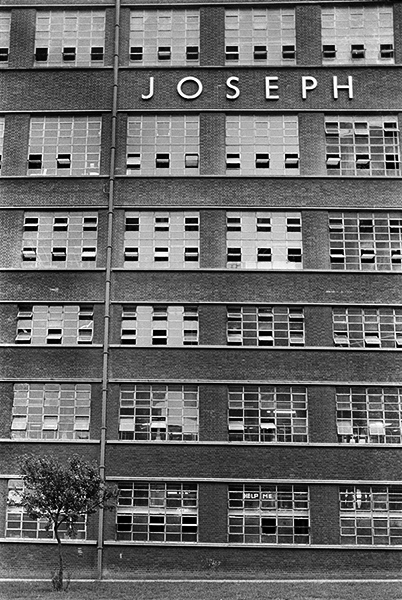
28×23: Joseph Rank’s Clarence Flour Mill, Clarence St, 1981 – River Hull
You can see the new pictures added each day at Hull Photos, and I post them with the short comments above on Facebook.
Comments and corrections to captions are welcome here or on Facebook.
Continue reading Hull Photos: 23/3/17-29/3/17
